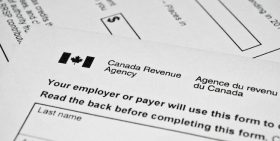If you have diabetes, you might be eligible for a break on your tax return. There are a number of credits that people with diabetes can apply for, to help offset the day-to-day expenses of living with the disease. Learn more about diabetes and tax returns in this article.
What is the disability tax credit?
The disability tax credit is available from the Canada Revenue Agency. According to the Agency’s website, “The disability tax credit is a non-refundable tax credit that helps persons with disabilities or their supporting persons reduce the amount of income tax they may have to pay.”
The purpose of the disability tax credit is to provide for greater tax equity by allowing some relief for disability costs, since these are additional and unavoidable expenses that other taxpayers don’t have to face.
Am I eligible for the disability tax credit?
To be eligible for the disability tax credit, you must meet all of the following requirements:
- You must have an impairment in physical or mental functions that is prolonged. This means it has lasted, or is expected to last, for a continuous period of at least 12 months.
- The impairment must be severe. It must restrict you all or almost all of the time (at least 90% of the time).
- Your severe and prolonged impairment must be certified by a qualified practitioner (a doctor, for those with diabetes).
If you meet the above requirements, you can visit the Canada Revenue Agency website to answer three questions. Based upon your answers, the Agency will determine whether you are eligible to apply for the disability tax credit. The next step in the process is to visit your physician and have him or her complete the necessary paperwork to submit to the Canada Revenue Agency.
Learn more about whether you may be eligible for the disability tax credit here.
What diabetes-related activities are covered?
The following activities are covered for people with diabetes who are eligible for the disability tax credit:
- Checking blood sugar levels
- Preparing and administering insulin
- Calibrating necessary equipment
- Testing ketones
- Keeping a log book of blood sugar levels
What diabetes-related activities are not covered?
The following activities are not covered for people with diabetes who are eligible for the disability tax credit:
- The time that a device (such as an insulin pump) takes to deliver therapy
- Counting carbohydrates
- Exercising
- Travel time to receive therapy
- Going to medical appointments
- Buying medication
- Recuperation after therapy
How much does the disability tax credit provide each year?
The disability tax credit amount can change from year to year, depending on inflation, government funding etc. In 2019, the disability tax credit for individuals with a severe and prolonged mental or physical impairment was a maximum of $8,576. If the person with a disability is a child under the age of 18, an additional supplement of $4,909 was added.
Are other tax credits available?
People with type 1 diabetes can apply for the Registered Disability Savings Plan (RDSP). Similar to a Registered Retirement Savings Plan, the RDSP helps people with type 1 diabetes (or their parents) plan for their future. Contributions can be made to an RDSP, until the end of the year in which the beneficiary turns 59.
Other tax credits that people with type 1 or 2 diabetes should consider applying for from the Canada Revenue Agency include:
- Child disability benefit: this tax credit is for families who care for a child under 18 who suffers from a severe and prolonged impairment of their physical and/or mental functions. Currently, this provides a tax-free benefit up to $2,886 per year.
- Medical expenses tax credit: if you paid for healthcare expenses, you may be able to claim them as eligible medical expenses on your income tax
- Travel expenses: if you had to travel at least 40 km one-way to access medical services not available in your community, you may be able to claim public transportation costs or vehicle expenses on your income tax
Contact the Canada Revenue Agency directly to determine whether you might be eligible for any of these tax credits.
What other government programs are available?
Many provinces have various financial assistance programs to help people with diabetes offset the cost of medications and devices. For more information on government and community financial assistance programs that are available in your province, click here.
 Diabetes Care Community Learn, connect and care
Diabetes Care Community Learn, connect and care






